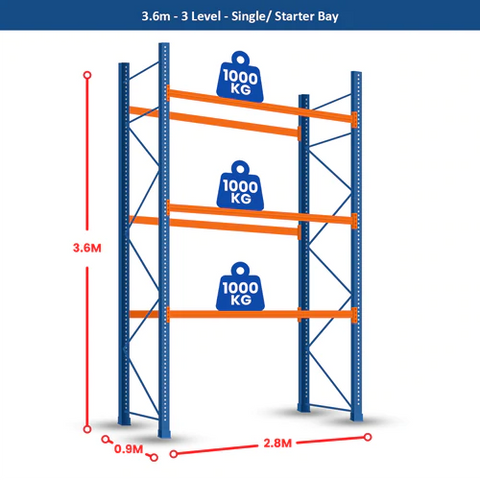
Warehouse shelving is a cost-effective and easy way to store large quantities of goods.
A warehouse shelving system is composed of a series of shelves, creating aisles, aisles with bays, and bays. The bays are typically the same size so that they can hold the same type and size of goods. The aisle width is typically around 8 feet wide.
A warehouse is a permanent or semi-permanent building used for storing goods, materials, and products, particularly in their final forms before they are shipped or delivered to customers. Shelving systems are meant to be used on all types of industrial shelving found in warehouses as well as retail store shelves. Warehouse shelving is used in many different industries and warehouses. It is a method that uses racks and columns to store goods.
Warehouses are typically large, open areas with aisles in between the rows of shelves. Warehouses often have temperature control systems to maintain the optimal environment for storage.
If you are looking for warehouse shelving products, there are certain factors you should consider.
1. Storage Space Available
The first step is to determine how much space is available for creating storage racks and whether the warehouse layout allows for such installation. It's worth noting that the entire floor area of an existing warehouse might not be used. The majority of racking systems on the market are standard sizes. In addition, the racking's structure takes up storage space. As a result, the required storage density may differ from what is expected. To fit a racking system, warehouse features like walls, partitions, and doors may need to be adjusted.
2. Vertical space
The first step is to establish how much storage rack space is available and whether the warehouse layout permits such installation. It's worth remembering that an existing warehouse's complete floor area might not be used. The vast majority of racking systems available are standard sizes. Furthermore, the racking's construction consumes storage space. As a result, the storage density that is required may differ from what is intended. Warehouse characteristics such as walls, partitions, and doors may need to be changed to accommodate a racking system.
3. Target warehouse capacity
Determining the target warehouse capacity utilization requires knowing the target capacity. The utilization of warehouse capacity is an important key performance indicator (KPI) in any business operation, notably in logistics and distribution facilities. Overcapacity has the disadvantage of greater investment and operating expenses. Having a low number indicates you'll have less room in case of distribution issues or overproduction. Consider the amount of storage space used up by seasonal inventory. During the off-seasons, warehouse capacity usage can skyrocket.
4. Accounting method
In terms of storage racking systems, this can be FIFO (first-in, first-out) or LIFO (last-in, first-out) (last-in, first-out). Keep in mind that inventory cost accounting may not accurately reflect the physical off-loading of products. Intuition dictates that the oldest item be removed first, ensuring that no objects remain stationary and lose value. However, some organizations employ LIFO, which prioritizes the offloading of the most recent products. When unloading from a material stockpile, the most recent item added to the pile is normally drawn.
5. Investment and Operating Costs:
This is likely the most significant consideration when assessing whether or not warehouse racking systems are feasible. Low-density, high-selectivity racking systems cost $50 to $100 per pallet position, while high-density, low-selectivity racking systems cost $100 to $250 per pallet position. It is best to analyze the economic value of modifying racking systems for current warehousing systems that have other options for acquiring more storage space, such as warehouse extension or leasing storage spaces. The large investment can be offset by lower operating costs, such as reduced labor, lower space leasing prices, and so on. Consider inherent benefits such as safety, ergonomics, and regulatory compliance, all of which can have an impact on profitability.
